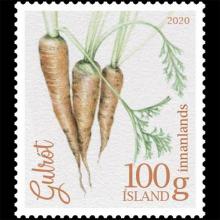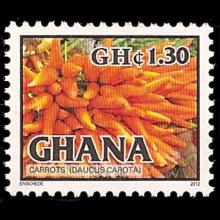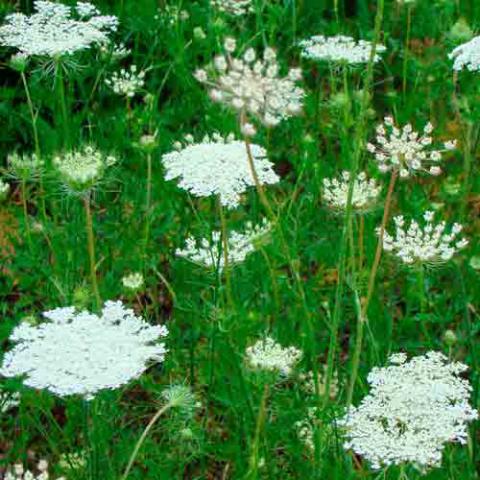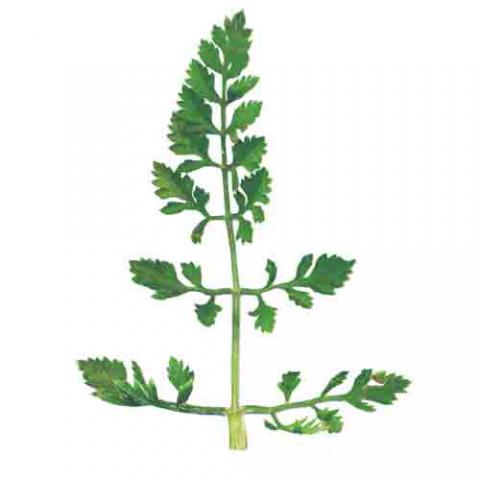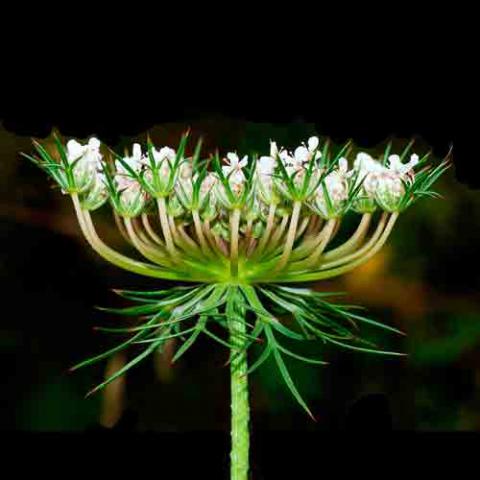NAME(S)
TAXONOMY
PLANTAE ID
THERAPEUTIC
Iceland
Issued:
Stamp:
Daucus carota
Ghana
Issued:
Stamp:
Daucus carota
Iceland
Issued:
Stamp:
Daucus carota
Ghana
Issued:
Stamp:
Daucus carota
Iceland
Issued:
Stamp:
Daucus carota
Ghana
Issued:
Stamp:
Daucus carota
Winners of International Photo Contest Celebrate the Art of Movement
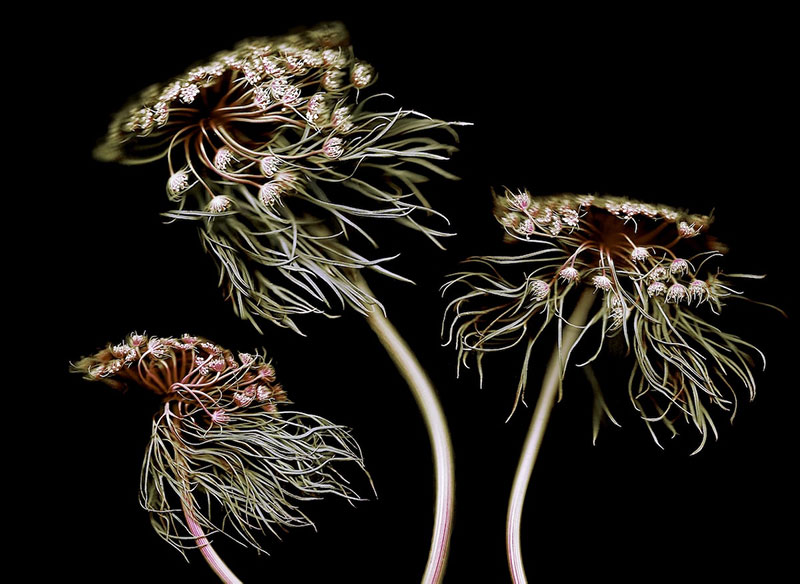
“Wild Carrots” by Anne Mason-Hoerter (Canada/Germany). Movement Photographer of the Year. First Place, Fine Art.
“Multiple scan data combined with digital camera data of a Wild Carrot, the scientific name being Daucus carota. My photographic process involves first taking the plant apart and then scanning each piece. I then combine those images with images I have taken with my cameras. I wanted to reproduce the unseen movement of plants at night. There are over 50 single images and took over a month to complete.”
Genus species (Plantae): Daucus carota
The wild carrot is a herbaceous, somewhat variable biennial plant that grows between 30 and 60 centimetres (1 and 2 ft) tall, roughly hairy, with a stiff solid stem. The leaves are tri-pinnate, finely divided and lacy, overall triangular in shape. The flowers are small and dull white, clustered in flat, dense umbels. They may be pink in bud and there may be a reddish flower in the centre of the umbel. The lower bracts are three-forked or pinnate, a fact which distinguishes the plant from other white-flowered umbellifers. As the seeds develop, the umbel curls up at the edges, becomes more congested, and develops a concave surface. The fruits are oval and flattened, with short styles and hooked spines. The dried umbels detach from the plant, becoming tumbleweeds. Similar in appearance to the deadly poison hemlock, D. carota is distinguished by a mix of tri-pinnate leaves, fine hairs on its solid green stems and on its leaves, a root that smells like carrots, and occasionally a single dark red flower in the centre of the umbel.
Daucus carota was introduced and naturalised in North America, where it is often known as "Queen Anne's lace". Both Anne, Queen of Great Britain, and her great grandmother Anne of Denmark are taken to be the Queen Anne for which the plant is named. It is so called because the flower resembles lace; the red flower in the center is thought to represent a blood droplet where Queen Anne pricked herself with a needle when she was making the lace. The function of the tiny red flower, coloured by anthocyanin, is to attract insects.
Identification
Description: Erect, biennial herb; leaves basal and alternate, 2-pinnately divided with narrow segments; flowers small, white, in a terminal, umbrella-shaped cluster; fruit small, dry, ribbed, with bristly hairs
Season: Summer, fall
Height: 1-4 ft.
Foliage: Bristly hairy stem; leaves are pinnately divided and deeply cut into numerous narrow segments
Flower: Umbel of small white flowers in a lacy-looking flat-topped cluster; 3-4 in. wide; deep purple floret in the center.
Chemistry
Toxic Principle: Falcarinol
Severity: toxic only if large quantities eaten.
This beneficial weed can be used as a companion plant to crops. Like most members of the umbellifer family, it attracts wasps to its small flowers in its native land; however, where it has been introduced, it attracts only very few of such wasps. This species is also documented to boost tomato plant production when kept nearby, and it can provide a microclimate of cooler, moister air for lettuce, when intercropped with it.
Use
Like the cultivated carrot, the D. carota root is edible while young, but quickly becomes too woody to consume. Extra caution should be used when collecting D. carota because it bears a close resemblance to poison hemlock. In addition, the leaves of the wild carrot can cause phytophotodermatitis, so caution should also be used when handling the plant. If used as a dyestuff, the flowers give a creamy, off-white color. Folk-medicine holds that an infusion of the seeds will inhibit pregnancy. D. carota, when freshly cut, will draw or change color depending on the color of the water in which it is held. Note that this effect is only visible on the "head" or flower of the plant. Carnations also exhibit this effect. This occurrence is a popular science demonstration in primary grade school.
Edibility
EDIBLE PARTS: Leaves, roots, flowers and seeds
HARVEST TIME: Only collect plants from areas you know have not been treated with pesticides. Gather leaves during the spring. The roots are collected during the spring. Use flowers during the summer. The small seeds are found during late summer.
SAFE HANDLING PROCEDURES: Wash edible parts thoroughly with warm water. Do not use dish detergent or any type of sanitizer. These products can leave a residue. Cook as greens or use fresh in salads. Also, add to stews for seasoning. Parboil for a few minutes, pour off the liquid, and then cook until tender. Leaves can be dried and later added to other foods as seasonings. First-year root growth (those plants not blooming) are tender and are used like domestic carrots. When using older roots, remove the hard core after cooking, and allow the soft pulp and the juices to flavor the other foods cooked. The fresh flower heads can be battered and fried like fritters, or can be used to make jelly. Fill a pot full of fresh flowers, cook for 15 minutes, strain and add "Sure-gel" to the liquid as if making a fruit jelly. Final product is slightly gelled. Gather and use as a seasoning for soups and stews. In addition, the seeds can be used like caraway seeds to top breads.
Medicinal Uses
Carrot soup makes an effective remedy for diarrhea and is easily digestible for those suffering from stomach and intestinal problems. Carrot is useful for preventing putrefaction in the intestine and for gastro-intestinal catarrh.
The carrot’s content of potassium salts accounts for its diuretic action, and it contains an essential oil that is effective against roundworms (east 2-3 raw carrots a day for several days). Take carrot juice for stomach acidity and heartburn. Carrots are good for the eyes; specifically, their carotene content provides the material for the body to make vitamin A, which is important for proper vision and night vision. An infusion or decoction of the seeds of wild carrot can be used for flatulence, as a diuretic, and to promote the onset of menstruation.
It treats fluid retention, chronic urinary tract problems, gout, jaundice, dysentery, cystitis, rheumatism, hiccoughs, chronic coughs, gall stones. Science confirms its bactericidal, diuretic, hypotensive, worm-expelling properties. Culpeper claims that carrot taken in wine, or boiled in wine, helps conception.
Grated carrots make an excellent poultice for ulcers, abscesses, carbuncles, scrofulous and cancerous sores, and bad wounds. The seeds of carrots, ground to powder and taken as a tea, relieve colic and increase the flow of urine. The powder may also be placed in capsules and 1 or 2 taken daily with a glass of water. Carrot blossoms, used as a tea, are a most effective remedy for dropsy and will very often cure when all other means have failed.
Carrot shavings or juice with a little lemon juice can be applied directly to the face like a facial mask. Best for oily skin.
Formulas or Dosages
Infusion or decoction: use 1 tbsp. wild carrot seeds with 1 cup water. Take 1 cup a day.
Juice: take 1-2 cups a day, or eat 10-12 oz. of freshly grated carrot for breakfast. An electric juicer makes fresh carrot juice easily available.
Soup: boil 1 lb. peeled, grated carrot in 3/4 cup water until very thick. Strain through a sieve. Then add 1 qt. of meat broth.
Reference: medicinalherbinfo.org, A Field Guide to Edible Wild Plants: Eastern and Central North America, by Lee Allen Peterson

